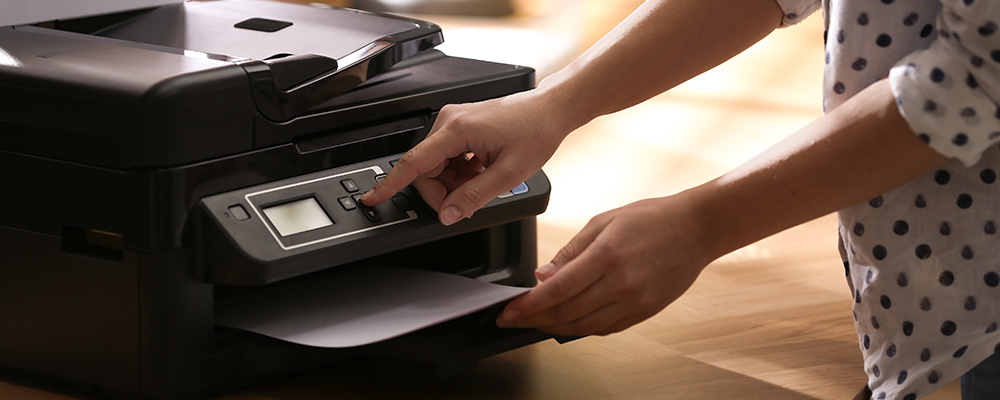In-Depth Guide to Inkjet and Laser Printer Labels

Choosing the right labels for your printer is key to getting great print results. Inkjet and laser printers have different needs that affect how labels look and last. Knowing these differences helps you pick the best blank sheet labels for your projects.
What Are Inkjet Printer Labels?
Inkjet printer labels are made for inkjet printers, which use liquid ink. These sheet labels have a special coating that quickly absorbs the ink, preventing smudges and making the prints look sharp and colorful. When it comes to exploring the various types of printer labels, inkjet labels are perfect for high-resolution images and detailed prints, ideal for product labels, shipping labels, and personal projects.
Inkjet labels dry fast, offer rich colors, and come in matte, glossy, and semi-gloss finishes. They also come in various materials, like waterproof options for outdoor use and standard paper labels for indoor use.
Advantages of Labels for Inkjet Printers
Inkjet labels produce detailed and high-quality prints. These prints are perfect for professional-looking labels, like marketing materials or DIY product labels. You can print them on demand, which is handy for making quick changes without wasting labels.
Understanding Laser Printer Labels
What Are Laser Printer Labels?
Laser printer labels are made for laser printers, which use toner and heat. These labels can handle the high temperatures of laser printers, ensuring the toner sticks properly for clear, sharp prints. They’re often used for address labels, barcode labels, and industrial labeling because they’re durable.
Laser labels are heat-resistant, ensure crisp prints, and are extremely durable. These items are typically made from materials such as polyester or polypropylene. These materials are able to withstand moisture, abrasion, and chemicals. This makes them ideal for use in harsh conditions.
Advantages of Laser Printer Labels
Laser labels are durable and can withstand harsh environments, making them great for long-lasting labels like shipping labels or ID tags. Laser printers also print faster than inkjets, which is good for high-volume labeling.
Choosing the Right Labels
Factors to Consider When Choosing Sheet Labels
Picking the right blank sheet labels involves a few key factors:
- Printer Compatibility: Make sure the labels match your printer type (inkjet or laser) to avoid issues like smudging or poor adhesion.
- Label Finish: Choose between matte, glossy, or semi-gloss finishes based on your needs. Matte is straightforward to read, glossy exudes a high-end appearance, and semi-gloss strikes a pleasant balance between the two.
- Adhesive Type: Choosing the appropriate adhesive is crucial. Permanent adhesives stick well, while removable ones are good for temporary use.
- Label Size and Shape: Choose labels that fit your needs, whether standard sizes for mailing or custom shapes for branding.
- Material Considerations: Think about where the labels will be used. Pick materials that can handle moisture, temperature changes, or exposure to chemicals.
Essential Supplies for Sheet Label Printing
To get the best results, make sure you have these supplies:
- High-Quality Printer: Use a reliable inkjet or laser printer.
- Label Templates: Use pre-designed templates or create custom ones for accurate text and graphics alignment.
- Proper Ink or Toner: Use the correct type for your printer to maintain quality.
- Storage Solutions: Store labels in a cool, dry place to keep them in good condition.
- Label Dispenser or Applicator: For high-volume tasks, use a dispenser or applicator to apply labels quickly and accurately.
Finding the Best Labels
Choosing the right label sheets for your inkjet and laser printers is key to getting great results. By understanding the features of each label type and considering factors like finish, adhesive type, and printer compatibility, you can make smart choices and find the best laser printer labels and inkjet labels available. For a wide selection of inkjet and laser printer labels that ship in just 1-2 business days, visit Label Blanks and explore our offerings.
FAQs
What materials are used for inkjet and laser printer labels?
Inkjet labels use materials with a special coating to absorb ink quickly, while laser labels are made to handle high temperatures and ensure toner adhesion. Common laser label materials include durable paper and synthetic options like polyester.
Can I use inkjet labels in a laser printer or vice versa?
Using inkjet labels in a laser printer or vice versa is not recommended. Each type is designed for its specific printer, and using the wrong one can cause print issues and may damage the printer.
How do I choose the right label size and shape for my project?
Think about what you need the label for and the amount of information it will hold. Measure the space where the label will go and pick a size and shape that fits well. Also, consider any logos or graphics to ensure they fit nicely on the label.
What's the difference between laser labels and inkjet labels?
Laser labels are made for laser printers and use toner and heat, making them heat-resistant and durable. They are great for sharp, long-lasting prints. Inkjet labels are designed for inkjet printers, using liquid ink. They have a special coating to absorb ink quickly, ensuring vibrant, high-resolution prints. Each type of label is tailored to its specific printer for the best quality and performance.




